Next Stop: Mars
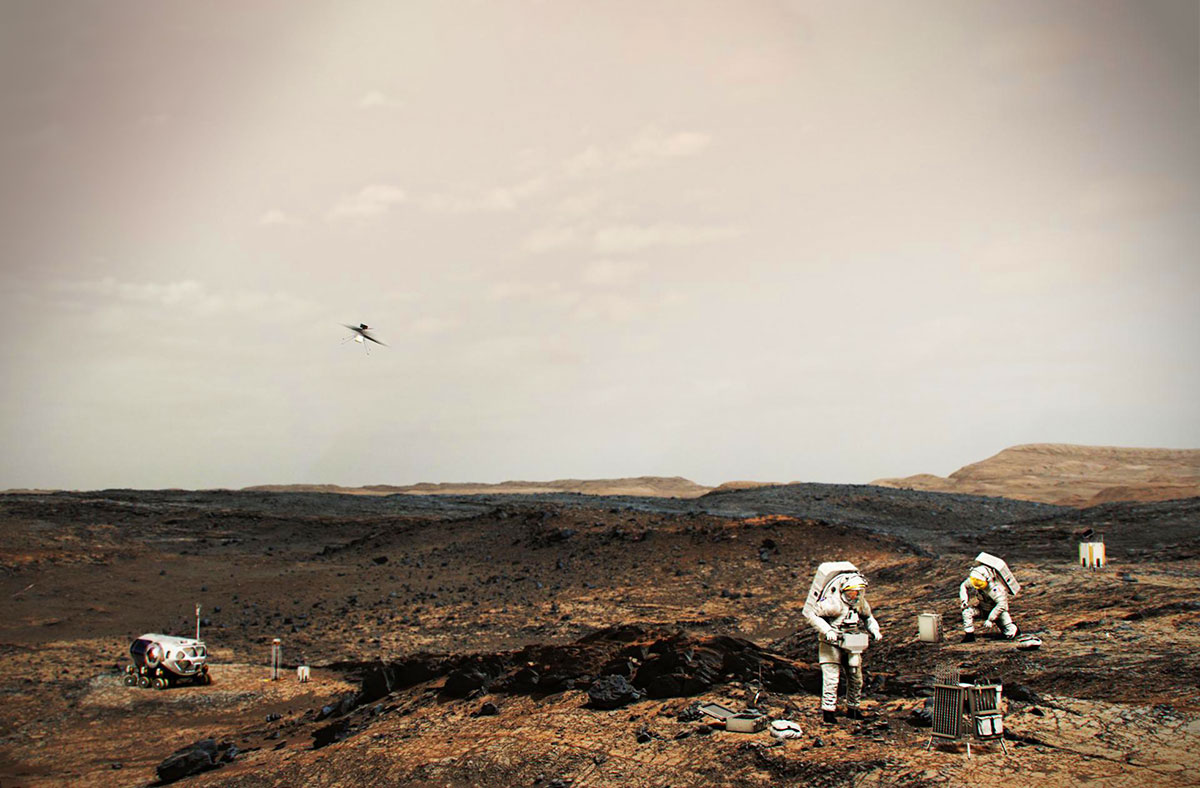
Robotic and human partnerships are critical for astronauts landing on Mars, set tentatively for 2040, and for setting up an outpost on the moon prior to the Mars crewed mission. NASA is currently researching the possibility of helicopters as part of the robotic team that may assist humans on Mars. ARTIST’S CONCEPT NASA/JPL-CALTECH
Universities along the Space Coast provide vital research for a future crewed mission
Imagine this: You spent the last nine months heading to Mars in a small spaceship and now you’re setting up shop to stay for a while. No Airbnbs, condos or convenience stores. Instead there’s a lot of orangey Martian dust, radiation and a thin atmosphere. Your key to the red planet is a survival system invented by researchers who did their best for decades anticipating the unknown.
Planning for a crew’s health in deep space is as essential as for a successful rocket launch, experts say. Researchers at the Florida Institute of Technology and the University of Central Florida have active roles in that work to ensure astronauts’ physical and mental health for the 140-million-mile trek from Earth to Mars. Radiation, isolation, distance, gravity fields and closed environments are the high-risk factors of all space exploration that scientists take into account while planning for the great crewed journeys.
November’s uncrewed test flight of the first Artemis mission to the moon is one of the first highly publicized signs of progress toward NASA’s goal of sending astronauts to Mars by 2040. Away from the launch pads, in labs and research settings, NASA also has conducted experiments in analog sites and on the International Space Station and will use the Artemis Gateway outpost to prepare astronauts for a Mars mission.
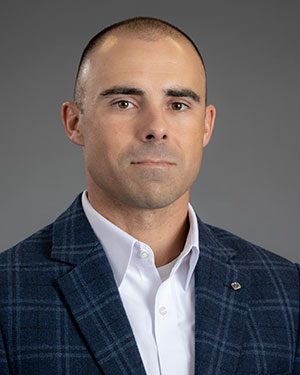
Richard Addante’s award-winning neuroscience research at Florida Tech focuses on memory. FLORIDA TECH
TESTING FOR STRESSES
Richard Addante, associate professor of psychology at Florida Tech, has served in analog environments and has designed tests for psychological readiness on astronauts. Scientists’ studies of biomedical and psychological stresses on astronauts on long space missions ramped up nearly two decades ago after former President George W. Bush announced plans to send humans into deep space. Many of the tests are designed to see how astronauts can counter challenges in space. For Mars, those challenges are more prominent because of the long trip to the red planet — ranging from six to nine months one way, compared with, for example, days of traveling to the space station or to the moon.
“NASA decided that it was important to study,” Addante says, noting that the space agency has taken a tremendous lead in studying space psychology and biomedicine. “That was a big cultural shift over time. I give them a ton of institutional credit, and they are leading that effort.”
“Human cooperation and team work are tougher than landing a rocket on Mars,” he says, noting that studies of psychological stress, though strong now, started later than the nation’s 1950s race to the moon. “We’re just really trying to get it right.”
In 2017, Addante participated as a crew member on one of NASA’s field test experiments simulated with the extreme conditions in space. He kept a detailed journal. The HERA, which refers to the Human Exploration Research Analogs, test that he took part in was at the Johnson Space Center in Houston. It was aborted after Hurricane Harvey pummeled the city with 130-mile-per-hour winds and a 6-foot storm surge. A skeleton crew of 125 or so remained in the space center after extreme, rapid flooding required it to close.
“The people in mission control at the Johnson Space Center during that time were selfless and made sure we were safe,” Addante says, recalling a surreal eeriness when the crew exited the simulation. “We came out like in this bunker to see a catastrophe. There were alligators on the streets.”
Addante’s chronicle of the experiment was valuable in studying stresses and interactions of a crew in deep space. Several times since his stint as a test subject, NASA has invited him to Houston to present his findings and recommendations at an annual workshop.
The crew’s perspective and the validity of the measures being tested are critical, Addante says. “For future crews, it’s essential to avoid an us-versus-them mentality between any crew and mission control,” Addante notes, “because ultimately we are one big team.”
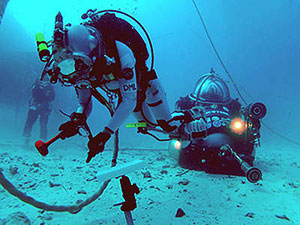
In NASA’s Extreme Environment Missions Operations, astronauts are able to simulate living on a spacecraft and test spacewalk for future moon and Mars missions. NASA
For another NASA simulated environment in the Florida Keys, Addante designed an experiment to measure cognitive and motor deficits in crews during what will be long, difficult and demanding work going to and exploring Mars terrain. In 2020, his test was used in NASA’s Extreme Environment Mission Operations, named NEEMO, to study cognitive and motor deficits under the stresses in space and to design countermeasures. His design was used on test subjects in the underwater laboratory, Aquarius, off of Key Largo for stints lasting up to three weeks. NASA has used the Key Largo site since 2001 for space exploration simulation missions.
“The astronauts are endeavoring to do hard things on a space mission because they’re important,” Addante says. “And failures of attention in memory are critical. A small error can be truly catastrophic so providing countermeasures to all those stresses is essential.”
Protecting others and understanding human nature come naturally to Addante, who is the oldest in a family of seven children. He has long served on Civil Air Patrol squadrons and is a member of the Patrick Space Force Civil Air Patrol.
For Addante, exploring beyond what is known is inherent to the human condition. “Space psychology brings that home,” he explains. “We are still required to look inward to understand ourselves so we can explore the great adventures beyond.”
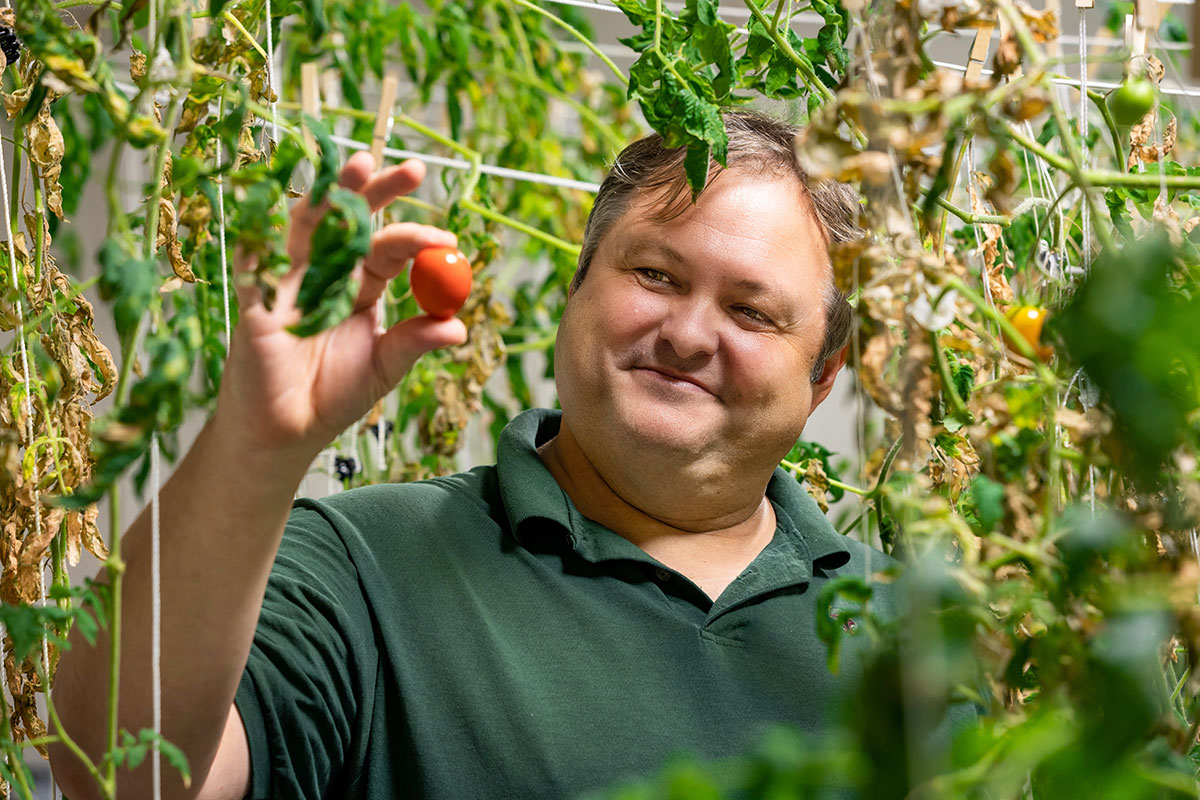
Astrobiologist Andrew Palmer is proud of the tomatoes grown in Mars-like conditions with potential for long-term food harvesting. FLORIDA TECH
GROWING A MARTIAN GARDEN
As is mental readiness, sustained food sources will be basic for a crew headed to Mars. Its so-called soil is referred to as a regolith with loose rocks and dust, but it has no organic matter in it unlike Earth’s rich soils. The Mars regolith also contains perchlorates, a highly toxic substance to humans. The many generations of Mars rovers have detected a wide distribution of perchlorates on the planet’s surface, and researchers must find a way to rid potential Martian gardens of that toxin safely.
Andrew Palmer, associate professor of biology at Melbourne’s Florida Tech, has cultivated sustainable foods in simulated versions of Martian regolith and hopes to find solutions to ridding it of perchlorates through grants from the National Science Foundation and NASA. His research also includes finding out more about bacteria on Mars.
“It’s difficult to understand how complicated food security is in space and how important it is,” Palmer says. “Artemis re-opened our minds on thinking about what’s outside of Earth, and it helped me realize that the moon is a stepping stone. Along the way, we’re figuring out challenges.”
He started a Martian garden laboratory nearly seven years ago after Kennedy Space Center life science researchers offered to partner with him. Since then, he and students, working in a Florida Tech greenhouse, have cultivated tomatoes, blueberries, lettuce, basil, mushrooms, peppers and broccoli to prepare for crewed Mars missions. In a funded project by the Heinz ketchup maker, his team of students grew more than 450 tomatoes from seeds that the company provided.
It is essential that nutrient-packed foods can grow in a closed environment on Mars, Palmer says, noting that they would need to be grown in a bubble-like system able to sustain enough nutrients and water.
“We need to focus on how to use the least amount of resources to produce the most,” he says. “You have to find a balance that is sustainable. We can create a system that will be better for plants and for people.”
For a crew to be safe on Mars, researchers must be able to study actual samples of Mars rock, Palmer says. President Joe Biden has proposed nearly $1 billion in NASA’s 2024 budget for such samples to be returned by 2030, with an overall increase of 7 percent in its 2023 fiscal year budget. Another concern is the high level of toxic perchlorates, which scientists have known about since the Phoenix Mars Lander in 2008.
“There has to be a progressive plan to eliminate perchlorates,” Palmer says. “It is going to have to be managed properly for people to settle safely and for plants to thrive.”
Born and reared in St. Augustine, Palmer resided in Wisconsin for several years prior to returning to his native state 11 years ago. He is exuberant about the Space Coast’s role in space research and is especially proud of students’ hard work at Florida Tech.
“It’s been spectacular to move back to Florida,” he says. “The end of the shuttle program was a real blow and seeing how we’ve rebounded — we’ve come back with a vengeance.”
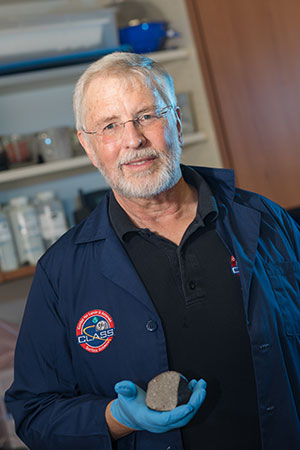
Dan Britt is one of two space researchers in the history of the University of Central Florida to be selected for the American Society of Civil Engineers Aerospace Division’s Outstanding Technical Contribution Award, one of the society’s most prestigious honors. Britt was recognized for his lead in producing simulated dirt
of the moon, Mars and asteroids, referred to as regoliths. UNIVERSITY OF CENTRAL FLORIDA
SIMULATING MARS DIRT
Dan Britt, a senior planetary science professor at the University of Central Florida, agrees. He was the manager for the camera on the Mars Pathfinder in the early 1990s and has been active in NASA projects since then, having in more recent years focused on the physical and mineral properties of asteroids, the moon and Mars. NASA has awarded the veteran researcher six achievement awards for his work.
“The Kennedy Space Center is crucial in launching these projects,” Britt says in a phone interview with Space Coast Living, noting that the state’s universities are also key. The University of Central Florida has several active NASA-funded projects in space exploration.
“This is also one of the things that makes Florida special, the interest in space and the support for it,” Britt says. “That’s really one of the ways that Florida keeps itself in the space industry to have a university and the skills to attract future space industries and to have a skilled work force. You’ve got to have the right mix of skills.”
At UCF, he directs the not-for-profit Exolith Lab, which was awarded a $7.5 million NASA grant in 2019 for its success producing simulated moon, asteroid and Martian rocks and dust. The simulated regolith comes from soils around the globe and is prepared by graduate students in a 6,000-square-foot lab in Oviedo, near the university campus. It is generally regarded as the gold standard for its precision in mineral replication of planetary regolith. In 2021, Britt’s team shipped the product, named Mars Global, to more than 40 countries. Palmer’s Martian garden at Florida Tech has used the simulant made in Britt’s lab for nearly three years.
“All of this is related to testing as realistically as possible,” Britt says of the simulant program. “If you’re working on resource extraction, you’ve got to replicate those conditions as accurately as possible. Our solar system is basically our future as a species, and exploration of that tells us a lot about the possibilities of what we can do in our future in terms of resources.”
Basic resources may be used at Mars or back on Earth, he explains. “There are more resources out in space, so what are those and how can they be used?”
GETTING HOME
To Britt, Palmer and Addante, human exploration of the red planet is inevitable. For decades, robotic rovers, including the Integrity helicopter that completed 50 flights in April, have transmitted massive data collections about the planet. They blazed the trail to scout it out ahead of that first human step onto Martian terrain.
“Mars holds a fascination for people,” Britt says. “It’s one place that we can go, perhaps. It’s not easy, but it can be done.”
Any perils in that long journey will be met with a crew that acknowledges risks and fear of uncharted space. Astronauts, like all humans, have the same inexplicable wonder of space exploration and worries, Addante says. But they also are resolved to completing their mission.
“The official NASA mission to Mars is defined as a two-way trip, so they’re coming home,” Addante says. “That resolve is part of the psychological profile for whoever goes to Mars. That kind of person is motivated to do a job excellently by exploring, pushing boundaries and getting home: That’s their job.”





